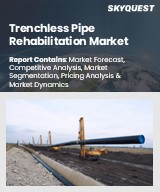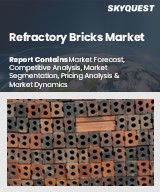
|
시장보고서
상품코드
1562512
시멘트 및 콘크리트 산업의 탈탄소화Decarbonizing Cement & Concrete Industry |
||||||
배출량이 많은 시멘트 산업은 2050년까지 시멘트와 콘크리트의 순생산량을 제로로 만드는 것을 목표로 대대적인 탈탄소화를 추진하고 있습니다. 이를 위해 시멘트 생산에서 클링커 계수 감소, 대체 연료 사용, CCUS, 카본 마이너스 콘크리트 등의 신기술이 주목받고 있습니다. 시멘트 업계 주요 기업들의 연합과 이니셔티브뿐만 아니라 정부에서도 다양한 정책을 내놓고 있습니다. 그러나 2050년까지 탄소 중립을 달성하기 위해서는 시멘트 생산 과정뿐만 아니라 가치사슬 전반에서 탈탄소화를 추진해야 합니다. 여기에는 북미와 같은 주요 수입국과 아시아 같은 주요 수출국 모두에서 이러한 노력을 기울여야 합니다.
시멘트 산업은 전 세계 배출량의 8%를 차지하는 중요한 산업(건설 산업 중 가장 큰 규모)입니다. 배출량 감축을 장려하기 위해 이 부문은 2050년까지 시멘트와 콘크리트를 순 제로로 생산한다는 대담한 목표를 세웠습니다. IEA에 따르면, 2050년까지 순제로를 달성하기 위해서는 향후 몇 년 동안 시멘트 생산량이 정점을 찍고 배출량이 약 20% 감소해야 한다고 합니다. 시멘트는 특히 빠르게 도시화되는 국가에서 전 세계 신축 수요가 많기 때문에 감축이 어려운 부문입니다. 따라서 시멘트 부문이 배출량 감축을 위해 다양한 탈탄소화 기술을 도입하는 것이 필수적이며, 각국 정부는 이를 지원하기 위한 법률과 재정적 인센티브를 마련해야 합니다.
탈탄소 기술에는 보조 시멘트 재료, 대체 연료, 탄소 포집·이용·저장, 녹색 콘크리트 등이 있으며, 개발·도입 단계는 다양합니다. 모두 비용 문제가 있고, 일부는 원료 부족에 직면해 있습니다. 또 다른 전략은 폐기물 및 폐기물 유래 연료의 활용을 촉진하는 순환형 전략으로 시장에서 입지를 다지고 있습니다. 시멘트 생산에 필요한 에너지 강도가 높기 때문에 완전한 전기화는 불가능합니다. 대신 석탄을 대체할 수 있는 대체 연료의 비율을 높여 탄소 배출량을 줄여야 합니다. 탄소 포집 기술은 현재 일부 공장에서 초기 단계에 도입되어 전체 배출량을 상쇄하는 역할을 하고 있습니다. 그러나 CCUS 인프라의 성장은 느리고, 이는 특히 시멘트 생산량이 많은 지역에서 두드러집니다. 새로운 기술은 콘크리트를 순 탄소 마이너스로 만들 수 있는 잠재적인 메커니즘을 입증하고 있으며, 아직 초기 단계이지만 산업을 변화시키는 데 필수적인 역할을 할 수 있습니다. 현재로서는 비용이 엄청나게 비싸지만, 이 기술은 야심차고 필수적인 넷 제로 목표를 달성하기 위한 귀중한 자원이 될 수 있습니다. 정부의 적절한 인센티브와 가이드라인이 있다면, 이 기술은 향후 10년간 급성장할 것으로 예상됩니다.
이 보고서는 시멘트 및 콘크리트 산업의 탈탄소화에 대해 조사하고 시멘트와 콘크리트의 탄소배출량과 산업 탈탄소화 정책, 최대 수입국 및 수출국, 향후 전망 등을 정리했습니다.
목차
- 주요 요약
- 시멘트와 콘크리트 탄소 배출량
- 시멘트 산업의 탈탄소화 정책
- 시멘트의 최대 수입국과 수출국
- 탈탄소화 기술 개요
- 크린 카 계수
CCU
- 대체 연료
- 그린 콘크리트
- 앞으로 나아갈 길
The cement industry, a top emitter, is making efforts to significantly decarbonize the industry, as it is currently aiming to produce net-zero cement and concrete by 2050. In order to do so, new technologies have come to the fore, namely: reduction of the clinker factor in the production of cement, the use of alternative fuels, CCUS and carbon negative concrete. Numerous policies have been brought forward by governments as well as coalitions and initiatives from major players of the industry. However, decarbonization efforts will need to be made across the whole value chain, and not only during the process of cement production if net neutrality is to be reached by 2050. This includes efforts from both major importers such as North America, and major exporters such as Asia.
The cement industry is a significant global emitter, accounting for 8% of global emissions (the largest within the construction industry). To incentivize emission reductions, the sector has set the bold target to produce net-zero cement and concrete by 2050. However, the sector remains far off track. According to the IEA, cement production will need to plateau in the upcoming years, and emissions fall by around 20%, in order to reach net-zero by 2050. Cement is a hard to abate sector due to the large global demand for new construction, particularly in rapidly urbanizing countries. Due to this requirement, it is essential the sector engages with a range of decarbonizing technologies to tackle its emissions, and for governments to establish supportive legislation and financial incentives. Decarbonization technologies include supplementary cementitious material, alternative fuels, carbon capture, utilisation, and storage, and green concrete, which are in varying stages of development and implementation. All face issues of cost, and some face raw material shortages. Another strategy gaining a foothold in the market is circularity, which promotes usage of waste materials as well as fuels which come from waste. Cement production cannot be fully electrified due to the intensity of its energy requirements. Instead, the sector will need to increase the proportion of alternative fuels used to replace coal and reduce carbon emissions. Carbon capture technology is now in early stages of being implemented in some plants, working to offset their overall emissions. However, CCUS infrastructure is growing slowly, and this is particularly true in the regions that produce the most cement. New technologies have demonstrated potential mechanisms for making concrete net carbon negative, which while still in the very early stages, could be vital in transforming the industry. Cost is currently prohibitive, but the technologies could be a valuable resource in achieving the ambitious but essential net zero targets. With the right governmental incentives and guidelines, these technologies could witness rapid growth in the upcoming decade.
Scope
- Global CO2 emissions from the cement and concrete industry, relevant policies for the decarbonization of the industry, analysis of major importers and exporters of cement, analysis of different decarbonizing technologies such as reduction of clinker factor, use of alternative fuels, CCUS, carbon negative concrete.
- The cement industry is aiming to produce net-zero cement by 2050, but the global cement production must stay flat in order to meet net-zero targets. Major players in the industry such as CRH, Holcim, Cemex and Heidelberg Materials have set individual decarbonizing targets and joined coalitions to combine efforts to reach said targets. Whilst the largest exporter of cement is Asia-Pacific, the largest importers and Europe and North America. The key decarbonizing technologies within the industry are the reduction of clinker factor, the use of alternative fuels, CCUS and carbon negative concrete.
Reasons to Buy
- Identify the market trends within the industry and assess what the biggest players in cement production are doing to reduce emissions.
- Develop market insight of the major technologies used to decarbonize the industry, as well as the policy framework laid out by governments.
- Understand the role major exporters and importers play in decarbonizing the industry and which strategies they should adopt going forward.
- Facilitate the understanding of what is happening within hard to abate industries as they look to becoming carbon neutral by 2050.
Table of Contents
Table of Contents
- Executive Summary
- Cement and concrete carbon emissions
- Policies to decarbonize the cement industry
- Largest importers and exporters of cement
- Introduction to decarbonizing technologies
- Clinker factor
CCUS
- Alternative fuels
- Green concrete
- The path forward



















